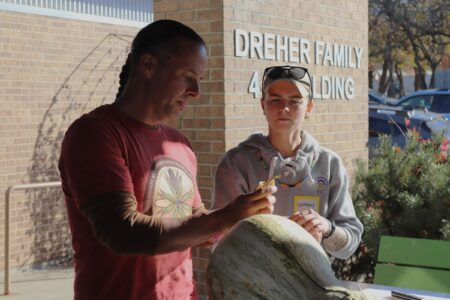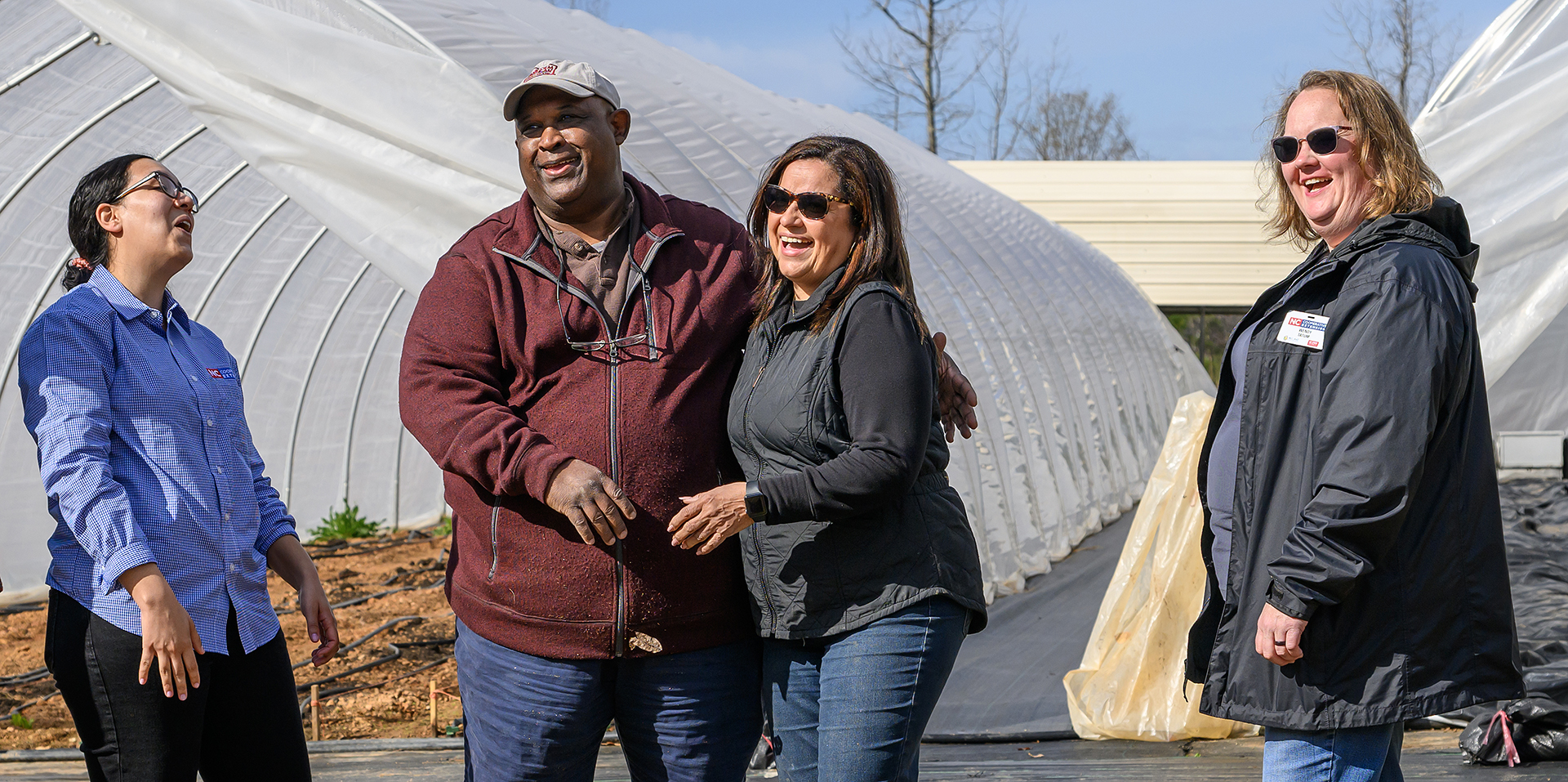Food Policy Council gathers Indigenous community input to shape food systems project – Lawrence Journal-World

Report on the Indigenous Food Systems Study and Action Plan in Douglas County
Introduction and Project Overview
The Douglas County Food Policy Council has launched the Indigenous Food System Study and Action Plan, a community-driven initiative designed to shape future food policy. The project focuses on supporting Indigenous food traditions and improving access to culturally significant foods, thereby addressing several key United Nations Sustainable Development Goals (SDGs). By gathering data, stories, and input from Native American and Indigenous community members, including entrepreneurs, chefs, farmers, and elders, the plan aims to create a more equitable and sustainable local food system.
Core Objectives and Alignment with Sustainable Development Goals (SDGs)
The initiative’s primary goals are directly aligned with the global agenda for sustainable development.
- Enhance Food Security and Nutrition (SDG 2: Zero Hunger, SDG 3: Good Health and Well-being): The plan seeks to improve access to traditional and nutritious foods for Indigenous communities, addressing food security and promoting health through culturally appropriate diets.
- Promote Sustainable Economic Opportunities (SDG 8: Decent Work and Economic Growth): By identifying the needs of Indigenous farmers and chefs, the project aims to support local entrepreneurs, fostering economic growth and creating sustainable livelihoods within the community.
- Reduce Inequalities and Foster Inclusion (SDG 10: Reduced Inequalities, SDG 16: Peace, Justice and Strong Institutions): The project actively incorporates the voices of Indigenous community members into the policy-making process, ensuring that the updated Douglas County Food System Plan is inclusive and representative of their needs and cultural heritage.
- Preserve Cultural Heritage and Sustainable Practices (SDG 11: Sustainable Cities and Communities, SDG 12: Responsible Consumption and Production, SDG 15: Life on Land): The initiative emphasizes the preservation of Traditional Ecological Knowledge (TEK) and cultural practices centered around food. This focus promotes sustainable land management, protects biodiversity, and strengthens community resilience.
Methodology and Community Engagement
On November 22, 2025, the council convened a public event at the Douglas County Fairgrounds to gather input. The engagement strategy included several key activities:
- Interactive Workshops: Participants engaged in hands-on activities such as breaking corn kernels and discussing traditional methods for food preparation and storage.
- Educational Activities: Plant walks were conducted in the Demonstration Garden to share knowledge about local flora.
- Direct Feedback Collection: Prompt boards were utilized to collect written responses from community members on topics such as the connection between Indigenous food systems and the preservation of cultural practices.
- Cultural Ceremonies: The event began with a smudging ceremony, setting a tone of respect and purpose for the “sacred work” being undertaken.
Key Findings from Community Feedback
Initial feedback highlights the integral role of food systems in Indigenous culture and well-being.
- Cultural Identity: Community members noted that many ceremonies, such as green corn ceremonies, are centered around food, reinforcing cultural identity and connection.
- Land Connection and Revitalization: Responses indicated that Indigenous food systems are fundamental to cultural reclamation and revitalization through the stewardship of land and culturally significant species.
- Knowledge Transmission: Participants expressed that re-learning from the land and through inter-tribal collaborations is vital, especially where Traditional Ecological Knowledge has been partially lost.
Strategic Partnerships and Future Actions
The project is supported by a multi-faceted approach involving strategic funding and clear next steps, demonstrating a commitment to SDG 17: Partnerships for the Goals.
- Funding and Partnerships: The first phase is funded by a $50,000 Hunger Free Kansas Transformation Grant from the Kansas Health Foundation, a partnership crucial for achieving the project’s goals.
- Policy Recommendations: The findings will be used to develop policy recommendations for the Douglas County Commission, directly influencing the 10-year update to the county’s Food System Plan.
- Infrastructure Development: A second phase is being explored, which includes a pilot grocer or congregation site. This hub would serve as a marketplace for Indigenous producers and an access point for community members, directly contributing to SDG 2 and SDG 8.
- Reporting and Accountability: The council is scheduled to provide an update on its progress to the Douglas County Commission in the first quarter of 2026.
Conclusion: Advancing Climate Action and Intergenerational Equity
As noted by organizer Brett Ramey, this initiative is a response to ongoing environmental, social, and cultural changes, aligning with SDG 13: Climate Action. By centering Indigenous knowledge and foodways, the plan not only aims to build a more resilient and equitable food system but also honors a responsibility to future generations. The project serves as a model for integrating cultural preservation with sustainable development to ensure healthy lands and healthy communities for all.
Analysis of Sustainable Development Goals in the Article
1. Which SDGs are addressed or connected to the issues highlighted in the article?
- SDG 2: Zero Hunger
- SDG 8: Decent Work and Economic Growth
- SDG 10: Reduced Inequalities
- SDG 11: Sustainable Cities and Communities
- SDG 13: Climate Action
2. What specific targets under those SDGs can be identified based on the article’s content?
-
SDG 2: Zero Hunger
- Target 2.1: By 2030, end hunger and ensure access by all people, in particular the poor and people in vulnerable situations, including infants, to safe, nutritious and sufficient food all year round.
Explanation: The article highlights the project’s goal to improve “access to culturally significant foods” for the Indigenous community. It also mentions a plan to explore a “pilot grocer or congregation site” to create a “hub where… community members can access Native foods.” - Target 2.3: By 2030, double the agricultural productivity and incomes of small-scale food producers, in particular women, indigenous peoples, family farmers, pastoralists and fishers, including through secure and equal access to land, other productive resources and inputs, knowledge, financial services, markets and opportunities for value addition and non-farm employment.
Explanation: The “Indigenous Food System Study and Action Plan” aims to “gather stories and data to try to figure out the needs of Indigenous entrepreneurs, like farmers and chefs” and to create a hub where “Indigenous food producers can sell goods,” directly supporting small-scale Indigenous producers.
- Target 2.1: By 2030, end hunger and ensure access by all people, in particular the poor and people in vulnerable situations, including infants, to safe, nutritious and sufficient food all year round.
-
SDG 8: Decent Work and Economic Growth
- Target 8.3: Promote development-oriented policies that support productive activities, decent job creation, entrepreneurship, creativity and innovation, and encourage the formalization and growth of micro-, small- and medium-sized enterprises, including through access to financial services.
Explanation: The initiative focuses on understanding and supporting “Indigenous entrepreneurs, like farmers and chefs.” The project received a “$50,000 Hunger Free Kansas Transformation Grant” to fund this work, which aims to foster economic opportunities within the Indigenous community.
- Target 8.3: Promote development-oriented policies that support productive activities, decent job creation, entrepreneurship, creativity and innovation, and encourage the formalization and growth of micro-, small- and medium-sized enterprises, including through access to financial services.
-
SDG 10: Reduced Inequalities
- Target 10.2: By 2030, empower and promote the social, economic and political inclusion of all, irrespective of age, sex, disability, race, ethnicity, origin, religion or economic or other status.
Explanation: The entire project is centered on including the Indigenous community in policy-making. The Douglas County Food Policy Council “brought community members together for public input” and aims to “incorporate the voices of elders” to ensure their needs and perspectives shape the future “county’s Food System Plan.”
- Target 10.2: By 2030, empower and promote the social, economic and political inclusion of all, irrespective of age, sex, disability, race, ethnicity, origin, religion or economic or other status.
-
SDG 11: Sustainable Cities and Communities
- Target 11.4: Strengthen efforts to protect and safeguard the world’s cultural and natural heritage.
Explanation: The article repeatedly emphasizes the preservation of culture through food. The project supports “Indigenous food traditions,” and participants noted that “Indigenous food systems contribute to the preservation of your cultural practices and traditions” and lead to “cultural reclamation and revitalization.” - Target 11.a: Support positive economic, social and environmental links between urban, peri-urban and rural areas by strengthening national and regional development planning.
Explanation: The project is a local planning initiative (“Douglas County Food Policy Council”) designed to provide “policy recommendations for the Douglas County Commission” and update the “county’s Food System Plan,” which is described as a “10-year framework offering strategic recommendations to shape the local food system’s development.”
- Target 11.4: Strengthen efforts to protect and safeguard the world’s cultural and natural heritage.
-
SDG 13: Climate Action
- Target 13.3: Improve education, awareness-raising and human and institutional capacity on climate change mitigation, adaptation, impact reduction and early warning.
Explanation: An organizer, Brett Ramey, explicitly connects the project to environmental challenges by stating, “while there is climate change happening to the environment, there is also social and cultural change, and these shifts are happening now.” This indicates that the project is, in part, a community response to build resilience and adapt to these changes.
- Target 13.3: Improve education, awareness-raising and human and institutional capacity on climate change mitigation, adaptation, impact reduction and early warning.
3. Are there any indicators mentioned or implied in the article that can be used to measure progress towards the identified targets?
-
SDG 2: Zero Hunger
- Implied Indicator: The creation of an “Indigenous Food System Study and Action Plan.” The development and eventual implementation of this plan is a primary measure of progress.
- Implied Indicator: The establishment of a “pilot grocer or congregation site.” This is a tangible outcome mentioned for the second phase of the project to measure improved access to Native foods.
-
SDG 8: Decent Work and Economic Growth
- Implied Indicator: Number of Indigenous entrepreneurs (farmers, chefs) identified and supported through the plan. The article states a goal is to “figure out the needs of Indigenous entrepreneurs.”
-
SDG 10: Reduced Inequalities
- Implied Indicator: The number of policy recommendations provided to and adopted by the Douglas County Commission. The article states the purpose is to “provide policy recommendations… to help shape an update to the county’s Food System Plan.”
-
SDG 11: Sustainable Cities and Communities
- Implied Indicator: The degree of integration of Indigenous food traditions and cultural practices into the updated county Food System Plan. The collection of community input on Post-it notes about cultural preservation shows this is a key data point for the project.
- Implied Indicator: Number of public input sessions and community engagement activities held. The article describes the launch event as one such activity designed to gather input.
-
SDG 13: Climate Action
- Implied Indicator: Integration of traditional ecological knowledge and climate adaptation strategies into the Food System Plan. The mention of “re-learning from the land” and adapting to “social and cultural change” alongside climate change implies this is a goal.
4. Summary Table of SDGs, Targets, and Indicators
| SDGs | Targets | Indicators (Implied from Article) |
|---|---|---|
| SDG 2: Zero Hunger |
|
|
| SDG 8: Decent Work and Economic Growth |
|
|
| SDG 10: Reduced Inequalities |
|
|
| SDG 11: Sustainable Cities and Communities |
|
|
| SDG 13: Climate Action |
|
|
Source: www2.ljworld.com
What is Your Reaction?
 Like
0
Like
0
 Dislike
0
Dislike
0
 Love
0
Love
0
 Funny
0
Funny
0
 Angry
0
Angry
0
 Sad
0
Sad
0
 Wow
0
Wow
0




















































.jpg.webp?itok=0ZsAnae9#)

























